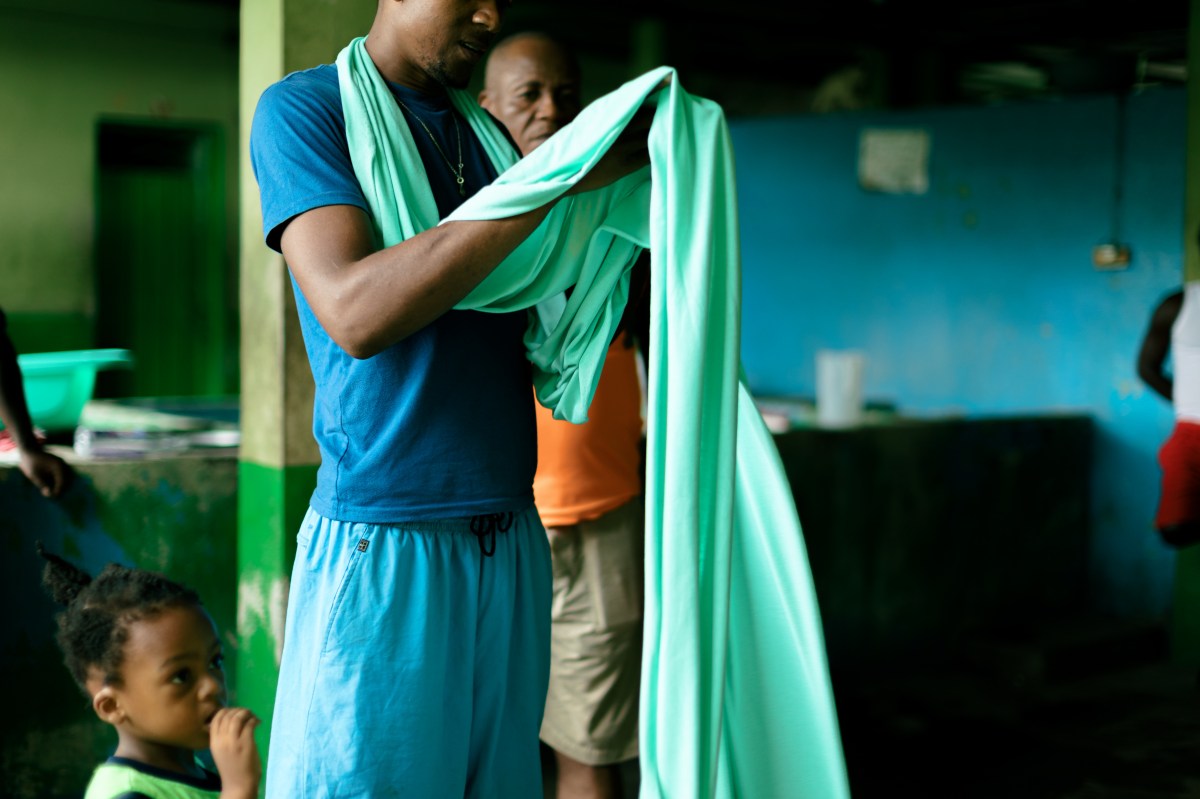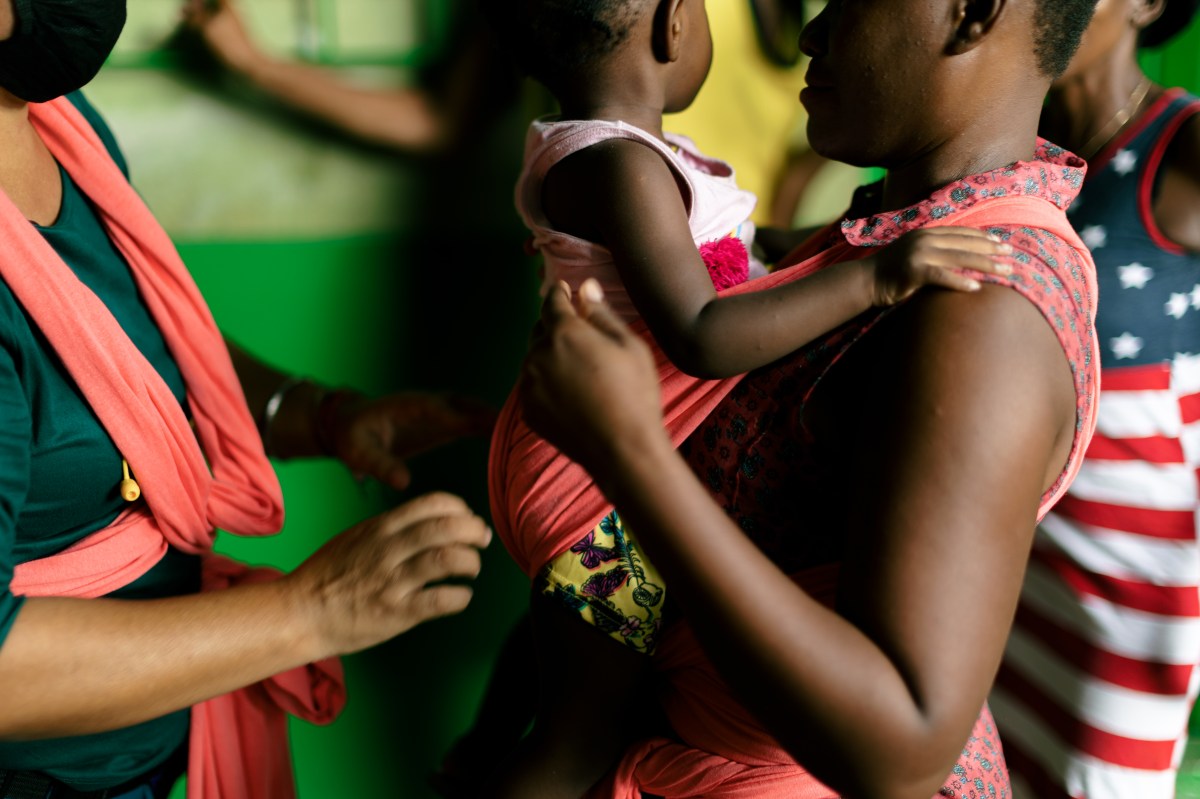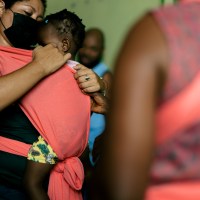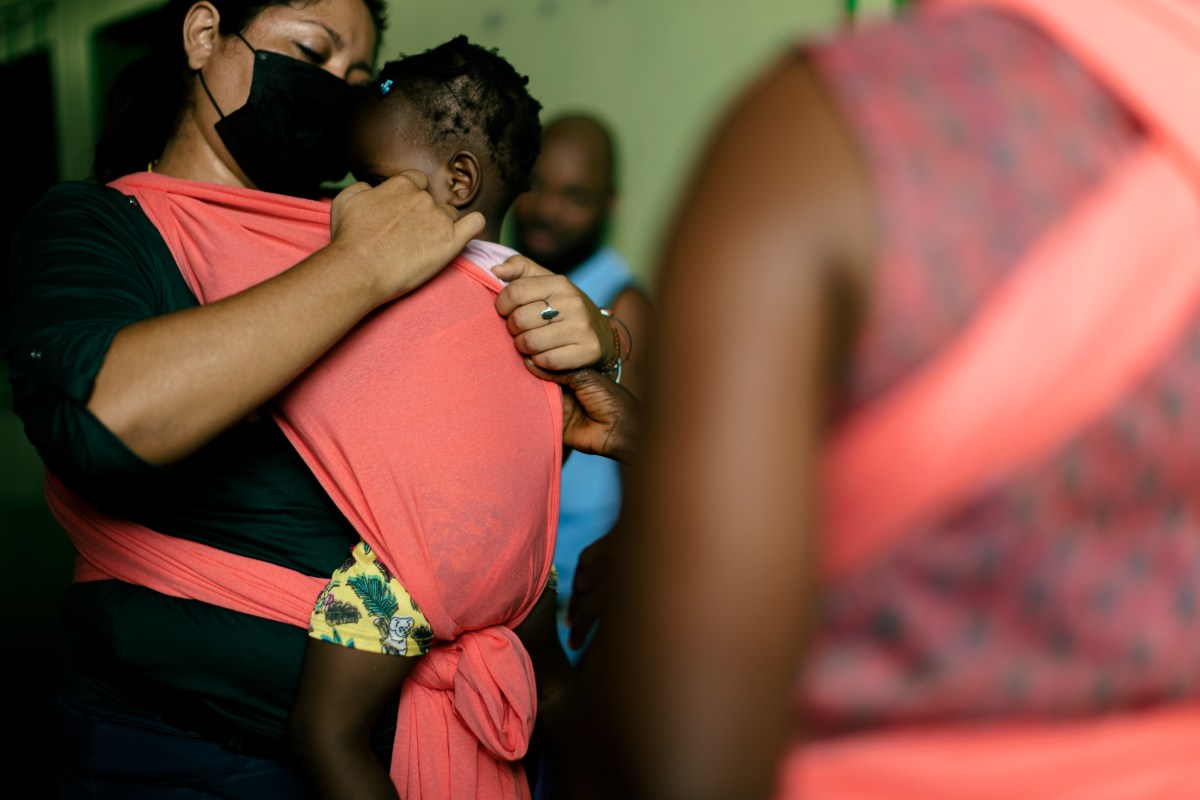When I go to the streets or the shelters in Tapachula, Mexico I see many friends. Young Centro-American women, young men who are displaced, old indigenous ladies, kids… But I also see migrant women who are pregnant and parents with newborn babies. I see moms and dads with their babies who are forced to leave their homes, walk so many kilometers through the humid jungle or across hot asphalt to their destination, and then have to wait for long hours on hard benches to make their applications for asylum in Mexico.
They face risks; their children face risks. Migrant babies often feel separated from their parents, become exhausted, and are at great risk of having an accident or getting lost. Considering this, we decided to partner with a local organization at the Mexico-Guatemala border to provide baby wraps to migrant parents.

Imagine a simple, colorful piece of fabric that changes everything for parents on the road. Baby wraps help our friends carry their small children and give parents two free hands to carry belongings or hold the hands of older children. Baby wraps allow moms and dads to be close to their children and create an emotional bond between them. Baby wraps also prevent migrant friends from losing their children in massive caravan crowds and prevent little ones from having an accident.
Over the last few months, we have distributed wraps to parents walking on the side of the road, resting in city parks, and in designated shelters for migrants in Tapachula. With our partner, we gave training sessions on using the baby wraps, at two shelters, to make sure parents are comfortable using the wraps, and get the maximum benefit from them.
I want to tell you about that training day. At the first shelter we visited–a grey two-story shelter with a classroom with clean, grey walls–women sat in a circle with their babies and young children and carefully listened. Our partner explained the benefits of the colorful baby wraps, how to put them on, and helped women to use them. A friend told us “My baby feels lighter.” Another woman, with a big smile, mentioned “I can even breastfeed my child!” A toddler who was old enough to talk was excited about the baby wraps. “I want it too, I want it!” she said. Once inside the baby wrap and close to her mom, she put her small head on her mom’s warm breast and smiled. She closed her eyes, while her mom swayed back and forth.

The next shelter we visited was different: imagine a noisy shelter with intense yellow walls and paintings of memorial paintings of migrant friends who died along the journey. Every room was packed full of beds and migrant friends—there was no room for us.
We called the women outside to an esplanade. There, surrounded by women, their babies, and the curious gaze of onlookers, our partner taught our friends how to use the baby wraps before giving them wraps of their own.
With a soft voice, a friend at this shelter said “My husband can use it too…I have free hands.”
Our mission has not finished. We are still delivering baby wraps and we still have to do more for our migrant friends. However, I can tell you this: my memory will always carry the image of those young women using colorful baby wraps, the smiles of their babies, and their wide eyes. Even now I can see them.


